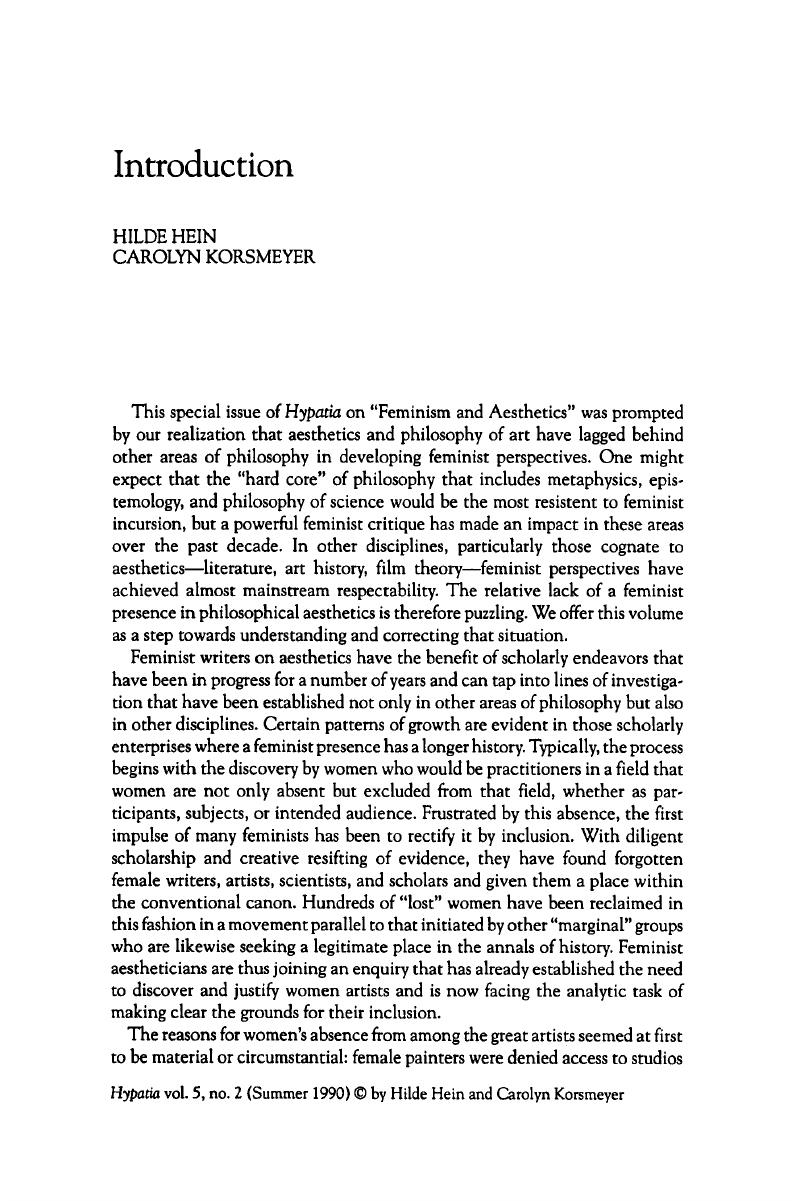Article contents
Introduction
Published online by Cambridge University Press: 25 March 2020
Abstract

- Type
- Introduction
- Information
- Copyright
- Copyright © 1990 by Hypatia, Inc.
References
Note
1 An issue of aesthetics and criticism that does receive attention by feminists but is largely ignored by the philosophical literature is the representation of woman as object. Seen against the backdrop of women's absence as subject in philosophy, this omission is significant. Unlike most male aestheticians, feminists explore the representation of women in art and its connection with ethics, politics, and epistemology, concluding that the institutions of the artworld, mirroring those of life, collude in the perpetuation of patriarchy. An often cited exception to this generalization is John Berger, Ways of Seeing (London: British Broadcasting Corporation, 1972).
- 2
- Cited by


